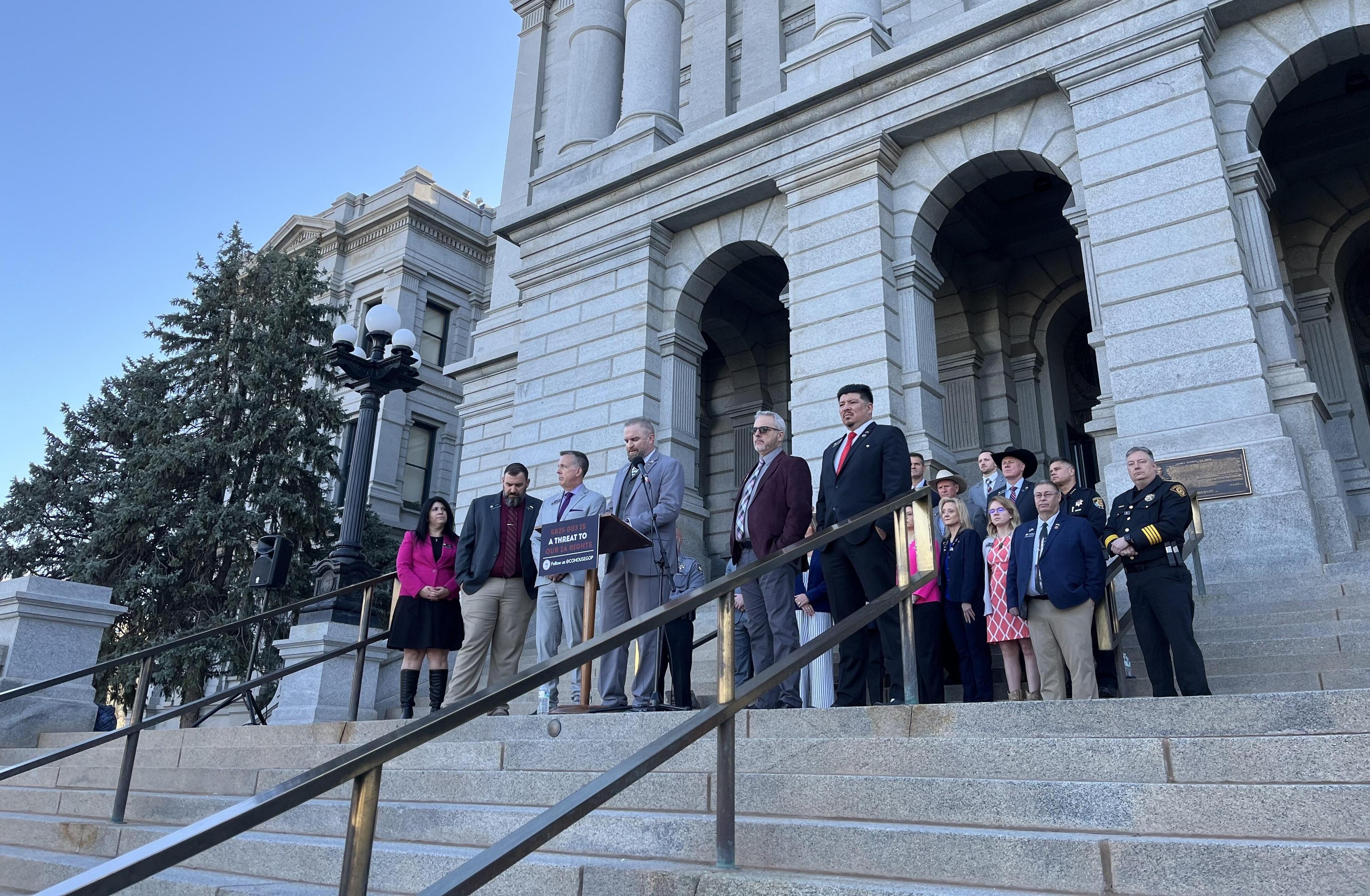
Lawmakers have almost finished up work on a drastically slashed budget to keep Colorado’s state finances in the black, but it may be months or even years before the effects truly become apparent.
“It’s the worst, but also the weirdest,” of the recent recessions, said Paul Teske, dean of the School of Public Affairs at CU Denver. Colorado faces some of the nation’s starkest predicted drops in revenue, though direct comparisons to other states are difficult, according to the National Conference of State Legislatures.
In all, lawmakers have cut about a quarter of their discretionary spending, totaling $3.3 billion. The results will be most noticeable in education and health care, but it will filter through in countless smaller ways, too, from shrunken government staffs to reduced health benefits.
Here’s how just some of these budget decisions will affect the real world.
Education
The cuts to school funding are the latest blow to an education system that’s already forced to reinvent itself in the midst of a pandemic, said Julie O’Brian, co-director of the Center for Practice Engaged Education Research at CU Denver.
“It’s not just that districts are facing budget cuts. They’re facing budget cuts at a time when they’re going to have to figure out greater needs than they’ve faced in a school year before,” she said.
Kids typically suffer a “summer slide” in their academic progress, and that’s likely to be much worse given the preceding months of lockdown and remote learning, O’Brian explained. “Students are likely to be farther behind than they would in other years,” she said.
In all, the state budget makes a half-billion dollar cut in state funding to school districts. Federal CARES Act money will replace most of that lost funding, but unless Congress acts again, that’s a one-time-only fix, and school districts are still figuring out how they can spend it under the law’s many rules.
Moreover, there may be more than $150 million of reductions to statewide programs meant to help disadvantaged students and boost suffering schools. School leaders are preparing to eliminate 11 programs and reduce another 14 for the year ahead, according to materials from the Colorado Department of Education.
The state is doing away with a $3 million program to draw highly qualified teachers to specific school districts, along with stipends for certain professionals. And a $135 million cut to the BEST program will delay school construction and repairs.
Meanwhile, higher education in Colorado faces a $493 million reduction. Even with $450 million in CARES Act money, that could translate to a 5% cut -- the effects of which are still playing out.
Health programs
Health programs across the state are preparing for budget cuts — including, for example, a 15% reduction to the state health department’s family planning program, which provides money to clinics across the state for contraceptives and other services. The program is credited with helping reduce Colorado’s teen pregnancy and abortion rates.
The $714,000 cut may return Colorado to the days of waiting lists for long-acting contraceptives like IUDs, warned Erin Miller, vice president of health initiatives at Colorado Children’s Campaign.
“We know fewer women are going to get served. It’s hard to say exactly how that will play out. Will clinics stock different devices? Will they cut hours? Will nurses simply not travel to rural areas?” she said.
“Because the resources are going to be constrained, there's going to be fewer people served, there’s going to be an increase in unintended pregnancies and there’s going to be costs in other parts of the system.”
The state budget also calls for cuts to Medicaid benefits. Recipients could see their maximum dental benefits reduced from $1,500 to $1,000, undoing a recent increase. Co-pays on emergency visits also could increase from $27 to the maximum allowable level of $75, Miller said. That would not apply to kids and pregnant women, but advocates warn the increase will discourage others from using medical services.
The state will suspend or cut funding for drug abuse prevention and treatment programs created by six recent laws, totaling about $26 million in reductions, according to Rob Valuck, director for the Center for Prescription Drug Abuse Prevention at the CU Skaggs School of Pharmacy. It could affect everything from public health campaigns to syringe exchange programs.
“We know if there aren’t as many harm reduction services, people will invariably have to reuse equipment, they’ll be reusing needles, at increased risk of spreading disease like HIV and hepatitis C,” Valuck said.
The cuts set back efforts that were years in the making, and they come just as demand for help with addiction may surge.
“We have more people unemployed. Everyone seems to be experiencing anxiety. People are relapsing, and it’s an overdose crisis as well,” said Lisa Raville, executive director of the Harm Reduction Action Center in Denver.
Pension funding delayed
The budget suspends a $225 million annual contribution to PERA, the pension fund for public employees. That transfer is normally required by a state law that was meant to pay down PERA’s unfunded liability and secure its future.
The direct result is likely to be higher costs for employees and slower benefits growth.
“In 2022, PERA participants and employers will see an increase to their PERA contributions, and retirees may see a suspension of the increase to (the cost of living factor),” said Karen Wick of the Colorado Coalition for Retirement Security, a group that advocates for public employees and their pensions.
It remains to be seen what the cuts and market turbulence will mean for the pension fund’s overall health. Meanwhile, state departments are expected to cut personnel costs by 5 percent.
Spared from cuts: senior homeowners, business taxes?
State lawmakers had considered a plan to suspend the senior homestead tax exemption, a discount for older homeowners. But, ultimately, they didn't do it.
Last year, the exemption was worth an average of about $575 for about 256,000 households. Suspending it could have netted the state about $147 million. Lawmakers took that step during the Great Recession, but they backed away from the option this year.
“A lot of our seniors have come to rely on this, and certainly when you’re on a fixed income is not the time to have to be finding money that you didn’t really plan on,” said Republican Rep. Matt Soper.
Groups like the Colorado Fiscal Institute have argued the exemption disproportionately benefits wealthier people, since it is only available to people who have owned homes for a decade.
The state legislature has also looked to bring in money by changing some business taxes. Democrats proposed a bill, which is still under consideration, to add $216 million in revenue in the upcoming fiscal year, and $349 million the next year.
The bill would tax additional income for some corporations, including by undoing certain federal tax cuts for businesses. As originally written, it would limit how much businesses could write off their losses when they pay state taxes, undoing allowances under the CARES Act. It eliminates a special tax allowance for insurance companies with Colorado offices, and it eliminates a tax exemption for industrial energy use.
But the proposal faces opposition from one key corner: Gov. Jared Polis. He’s made it clear he doesn’t support the bill and could veto it if it lands on his desk.
What about next year?
Colorado is one of the first states to have to craft a spending plan in this new pandemic-driven reality, due to the timing of its budget cycle. But it likely won’t be the only painful budget year, since the full effects of a recession are often delayed for governments. The Great Recession began in 2008, but “I think the trough for states was 2010,” said Mandy Rafool, director of the fiscal affairs program at the National Conference of State Legislatures.
It’s impossible to say whether that pattern will repeat itself this time. “The thing about this recession from the last recession is that it was so fast and severe,” she said.
And some severe effects on property taxes may not arrive for months or years to come, depending on voters’ decisions this November. In either case, a full recovery can take years.
“It wasn’t until the ‘08-’09 recession that the general fund was back even to the level it had been before” the early 2000s recession, Teske said. One overwhelming question: Will Coloradans live within these new, reduced limits, or will they agree to new money through taxes?
“When they’ve gone to the voters for those kind of changes, it hasn’t been terribly successful,” Teske said. “But with this current crisis, which I think people do understand is a crisis, it does open up a lot more possibilities.”
A coalition of progressive groups is currently collecting signatures on an initiative that asks voters to raise taxes on the top 5 percent of households in the state. State analysts estimate it could bring in $2 billion a year.









